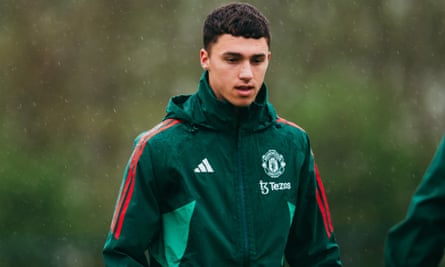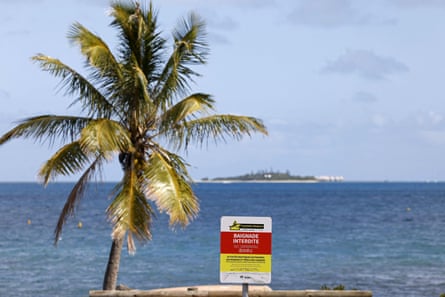“Chris Wood is having a pretty good season,” begins Iain Cargill. “Being from New Zealand, whose Fifa ranking is 104, which Premier League players come from countries with lower Fifa rankings?”
“If we discount players at clubs who have yet to make their first league appearance yet then Wood is the player from the second lowest-ranked country currently represented in the Premier League,” writes Tom Reed. “Marvelous Nakamba at Luton comes from 122nd-ranked Zimbabwe (all rankings measured from the current list).
“Looking at players who are no longer in the Premier League and their countries’ lowest rankings during the time they were playing, we can go lower than Nakamba:
-
Gunnar Nielsen Manchester City 2009-10, ranked 125th with Faroe Islands
-
Gaël Bigirimana Newcastle 2012-13, ranked 135th with Burundi
-
Stéphane Sessègnon Sunderland 2011-12, ranked 136th with Benin
-
Florent Hadergjonaj Huddersfield 2018-19, ranked 141st with Kosovo
-
Helder Costa Wolves 2018-19, ranked 142nd with Angola in January 2019
-
Nathaniel Mendez-Laing Cardiff 2018-19, ranked 149th with Guatemala
-
El Hadji Ba – Sunderland 2013-14, ranked 159th with Mauritania
-
Alex Nimely Manchester City 2009-10, ranked 161st with Liberia
-
Dexter Blackstock Southampton 2004-05, ranked 163rd with Antigua and Barbuda
-
Al Bangura and Albert Jarrett Watford 2006-07, ranked 165th with Sierra Leone
-
Bobby Bowry Crystal Palace 1994-95, ranked 176th with St Kitts and Nevis
-
Jason Roberts Blackburn 2007-08, ranked 176th with Grenada
-
Zesh Rehman Fulham 2004-05, ranked 178th with Pakistan
-
Emerson Boyce Wigan 2012-13, ranked 178th with Barbados
-
Modou Barrow Swansea 2016-16, ranked 179th with Gambia
-
Onel Hernández Norwich 2019-20, ranked 179th with Cuba
-
Vurnon Anita Newcastle 2013-13, ranked 183rd with Curaçao
-
Kyle Lightbourne Coventry 1997-98, ranked 184th with Bermuda
-
Mesca Fulham 2013-14, ranked 184th with Guinea-Bissau
-
Neil Danns Blackburn 2003-04, ranked 185th with Guyana
-
Jordi Amat Swansea 2016-17, ranked 191st with Indonesia
-
Frédéric Nimani Burnley 2009-10, ranked 202nd with Central African Republic
-
Ruel Fox Spurs 1998-99 ranked, 202nd with Montserrat
“Other Premier League players have represented these nations at various times. The names listed refer to the lowest rank each nation reached while being represented by a player who played at least on Premier League game in the same season.”
We can throw in Zesh Rehman, who won caps for Pakistan (193rd) during his spell with Fulham. Jack Hayward, meanwhile, points us towards a couple of youngsters to watch. Liverpool youngster Kyle Kelley has been capped twice by St Kitts and Nevis, who sit 147th in the rankings, and the Manchester United academy prospect James Scanlon has two appearances for Gibraltar, currently ranked at a lowly 203rd place.

Winning a title from way behind
“Leeds are top of the Championship despite being 17 points behind the leaders as recently as 12 January,” tweeted Andy Brook last month. “What is the biggest in-season deficit a team has overcome to clinch the title?”
Chris Roe has a good answer for this one. “After 19 matches in the 2022-23 season, Manchester City were eight points behind leaders Arsenal before their strong second half of the season ensured that they became champions. This is not a record for the top flight, and I’m sure not too many readers will be surprised that Manchester United’s 12-point deficit behind Newcastle (after 25 matches in 1995-96) is the biggest I could find. They share this jointly with Arsenal’s 1997-98 side, who were 12 points behind Manchester United. Both teams successfully overturned this deficit to go on to be league champions. But, let’s focus on the specifics of Andy’s question: a 17-point deficit would only be good enough for equal-second place. The record is held by Reading, who in 2011-12 were in 15th position, 18 points off the top spot after 17 matches. They finished a point clear of Southampton at the end of the season.”

Even further-apart country clashes in the Euros
We had a healthy response to the question of most far-apart country clashes in the Euros, with last week’s example of Portugal (the island of Flores) and Russia’s Egvekinot, giving us a distance of 7,939km (4,933 miles) …
“Surely the comparison should be with the closest points between countries,” writes John Nelson. “If the correspondent is basing their answer on furthest points, they are wrong. Réunion, in the Indian Ocean, is a department and region of France. It is 11,411km (7,090 miles) from Iceland.”
If we’re sticking with the furthest points – and let’s be honest, the horse has already bolted on that one – then Jason Crawford can take us further. “The distance between the farthest points of Portugal and Russia is quite far, however, almost doubling this is the distance between France and Denmark, who played a group game at Euro 2000. As with the Azores and Portugal, New Caledonia is an autonomous region of France, where people have French citizenship and can vote in French presidential and European elections. The distance between its capital, Noumea, and Copenhagen is 15,572 km (9,769 miles). As for 7,939 kilometres being a greater distance than between the North and South Poles, there may be some confusion between metric and imperial systems as this is about the diameter of the Earth from the North to the South Pole in miles. As the crow flies you’d have to travel about 20,000km or close to 12,500 miles.”

Knowledge archive
“I am sick of hearing about Rory Delap’s long throws,” barfed Chris Barnes with uncalled-for virulence in July 2012. “Can you confirm that other Premier League teams score way more goals from throw-ins than Stoke do, including my team, Blackburn Rovers?”
Well, Chris, it was true that in their valedictory Premier League season your team did score more goals from throw-ins than Stoke, with both Blackburn and Bolton leading the table that season with three goals each following flings. Stoke only got two. Bolton also bettered Stoke’s return from throw-ins in the 2009-10 season (when they scored six to Stoke’s five) but otherwise, Stoke were the kings in this realm, outscoring everyone from throw-ins in the other two of the four seasons since their return to the Premier League.

Mind you, Stoke’s dependence on throw-ins reduced significantly, which is just as well because their effectiveness also declined: Opta statistics show that in their first season back in the top flight (2008-09), Stoke flung in 377 long throws and plundered nine goals from them, making for a goal-per-long-throw strike rate of 37. Buoyed by that return, Stoke hurled in almost double that amount of long throws the following season (608) but the ploy only yielded five goals, giving a strike rate of 122. Over the following two seasons the strike rate went out to 142 and then to 261 (two goals from 522 long throws). This decline, however, was more than offset by improvements in corners and free-kick efficiency.
Can you help?
“Watching Cole Palmer reaching 20 goals with talk of the Golden Boot, plus the fact that prior to this season he had not scored a league goal, made me wonder if there has ever been a top scorer managing that feat?” asks Lasse Jygert.
“In the 1980-81 season of Serie A, five teams ended on 25 points, Avellino, Ascoli, Udinese, Como and Brescia,” writes Kári Tulinius. “Only Brescia were relegated. Have more teams ever escaped the drop at once, despite having the same number of points as a relegated team?”
“Do any goalkeepers still wear the same colour shorts and socks as their outfield teammates,” wonders Guy Millington.
“Leverkusen’s Bundesliga title win has broken Kingsley Coman’s remarkable run of winning the league in each of the last 11 seasons (with PSG, Juventus and Bayern). Can any player in world football ever boast of a longer run of consecutive league titles?” asks Richard Forsythe.
“Which team has won the most games in European competition without winning their own league in the last 50 years?” muses Roger Kirkby.
-
Mail us your questions or tweet @TheKnowledge_GU.
Source: theguardian.com


